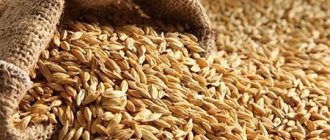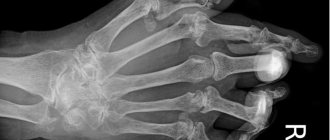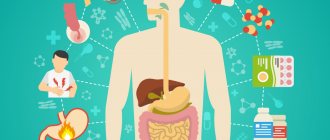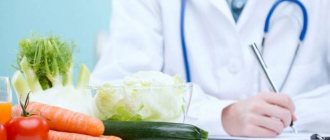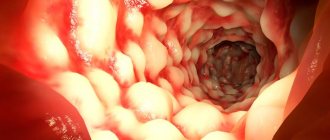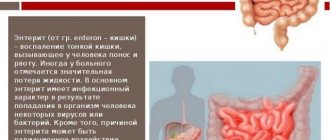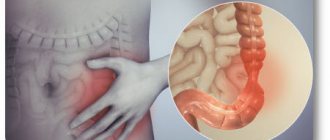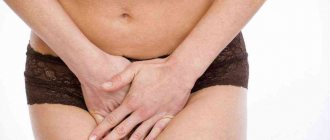Pain in the intestines is a clinical sign that is characterized by pain in the area of this organ, which is most often a manifestation of gastroenterological diseases, but only a doctor can accurately determine this factor by carrying out the necessary diagnostic measures.
- Etiology
- Classification
- Symptoms
- Diagnostics
- Treatment
The nature of the additional clinical picture of pain in the intestines will depend on what exactly caused the appearance of such a symptom. Vomiting, nausea, stool instability, and general deterioration of health may be present. Due to the fact that the general symptoms are nonspecific, self-medication is unacceptable.
Diagnosis is carried out through a physical examination, laboratory and instrumental tests. The tactics of therapeutic measures will depend on the underlying factor, but in most cases conservative therapy is used. It is also possible that pain in the intestines can only be eliminated through surgery.
Prognosis will depend on the severity of the underlying disease, general indicators of the patient’s health, and whether therapeutic measures were started in a timely manner.
Symptoms
The clinical picture of the disease includes several common symptoms that are characteristic of almost all lesions of the large intestine. These include:
- Stool disorders. Patients experience impaired peristalsis of the organ. If it accelerates too much, diarrhea occurs, but if it slows down, constipation appears. Tenesmus, a false urge to defecate, may occur.
- Stomach ache. Discomfort and pain in diseases of the large intestine are localized in the lateral parts of the abdominal wall, less often they occur in the umbilical and epigastric regions. If the rectum is damaged, pain may appear near the anus. The sensations are usually aching, dull in nature, and cramping pain is much less common. The severity of the symptom decreases after defecation or when gas is released.
- Abnormal bowel habits. Changes in the consistency and color of feces may indicate the presence of pathology. An important diagnostic sign is the appearance of blood in the stool. When the large intestine is damaged, scarlet blood is released, as it does not have time to clot when passing through the digestive system. In some cases, mucus or pus may be released instead of feces.
- Flatulence. Accumulation of gas in the intestines is observed with significant digestive disorders. It is usually accompanied by rumbling in the stomach and bloating. The onset of symptoms is typical in the evening; by night they usually weaken or disappear completely.
Most diseases of the large intestine have a severe course, as a result of which the metabolism in the body is disrupted and intoxication develops. Symptoms characteristic of this condition appear - severe weakness, exhaustion, dizziness, loss of appetite.
In newborns
Since at birth the digestive tract has not yet completed its development, in infants the large intestine has a number of characteristic features. Its functions are similar to those in adults, however, upon visual examination one can detect the absence of typical bulges and constrictions. Omental formations begin to appear only by the third year of life, and the total length at birth reaches no more than 65 cm. By the second year, the length should increase by 20 cm. The colon will be fully formed only by the fifth year. Since the sections of the intestine develop unevenly, some sections may not be located where they are in adults. For example, the cecum in infants is located under the liver. As the child grows, the blind angle begins to descend into the right iliac region.
In infancy, the cecum merges so smoothly into the appendix that sometimes it is not possible to distinguish them from each other. The shortest section at a young age is the ascending part of the colon, only 2 cm. For some time it maintains this size, but in the second year it begins to actively grow.
In adults, the sigmoid colon is localized in the pelvis. In children, this area is poorly developed, so the intestine has to move into the abdominal cavity for some time. By the age of 5, when the pelvic bones have already reached the required size, the intestine takes its usual place.
The information given in the text is not a guide to action. To obtain more detailed information about your disease, you should consult a specialist.
Causes
The range of reasons that can cause disruption of the large intestine is quite wide. The most common factors include:
- Infectious agents. Under the influence of bacterial and viral agents, an inflammatory reaction develops in the wall of the organ, which underlies a group of intestinal diseases - colitis.
- Autoimmune processes. Aggression of a person’s own immunity towards the wall of the large intestine also contributes to the occurrence of inflammatory processes. This development mechanism is characteristic of one of the most severe diseases of the large intestine - nonspecific ulcerative colitis.
- Allergic reactions. When a product to which the patient is allergic enters the digestive system, an active hypersensitivity reaction develops. This process occurs with food allergies.
- Toxic effects. When the intestinal wall is damaged by toxic substances, the normal functioning of the organ is disrupted and symptoms of its damage appear.
- Vascular disorders. With insufficient blood supply to the organ, ischemia of the large intestine develops - oxygen deficiency and hypoxia accompanying this process. Vascular disorders occur with ischemic colitis.
- Dysbacteriosis. The lack of normal microflora in the large intestine adversely affects many areas of metabolism. With a decrease in the content of symbiont bacteria, the risk of intestinal infection by pathogenic microorganisms increases. In addition, the body experiences a deficiency of those vitamins that are normally produced by the “friendly” intestinal microflora.
- Oncological processes. Tumors can occur in the intestinal wall and tend to progress rapidly. These can be both benign formations (polyps) and malignant tumors (intestinal cancer).
- Lifestyle disorder. The appearance of intestinal diseases is facilitated by features of the daily routine - poor diet, inadequate sleep, insufficient physical activity. These disorders cannot cause the disease on their own, but they help reduce the body’s immunity, that is, they have an indirect effect.
- Helminthic infestations. Some parasites live in the large intestine, which leads to digestive problems. With a prolonged course of helminthiasis, it is possible to develop general metabolic disorders caused by insufficient absorption of nutrients in the area of parasite invasion.
Be sure to read: Endoscopic methods for examining the intestines: description and preparation
The genetic factor has a certain significance in the development of diseases of the large intestine. Some pathologies are characterized by a hereditary predisposition, which increases the risk of developing diseases of the digestive system.
What to do if you have pain?
If you often suffer from constipation, but the pain is not particularly bothersome, perhaps the reason lies in poor nutrition and you should review your diet and include more foods that contain fiber. Pectin (oranges, grapefruits), containing dietary fiber, helps to cope with constipation. Don't forget about your daily water intake. A sufficient amount of it adds volume to the feces and promotes their intensive movement. In case of severe painful manifestations, it is necessary to forget about self-medication and visit a specialist for diagnosis. The doctor will determine the nature of the pain and select the necessary treatment. For such ailments, analgesics, antispasmodics and anti-inflammatory drugs are prescribed to reduce pain.
Diagnostics
Diagnosis of diseases of the large intestine is carried out by a highly specialized doctor - a coloproctologist. When examining a patient, instrumental techniques are used.
Irrigoscopy
Main article: Irrigoscopy
The study involves filling the intestines with a contrast agent and taking an x-ray. When performing the test, pathological changes in the intestinal walls are detected - inflammatory processes, neoplasms and tumors.
Colonoscopy
The technique relates to endoscopic examinations. With its help, you can examine all parts of the large intestine through a special camera, which is inserted through the anus. During the study, doctors can assess the condition of the colon mucosa, detect signs of inflammation, and examine suspicious tumors.
Colonoscopy is the gold standard for diagnosing tumors of the digestive tract. The technique allows not only to detect a pathological formation, but also to take a fragment of it for histological examination. When examined under a microscope, it is possible to establish the nature of the tissue and differentiate between malignant and benign tumors.
Sigmoidoscopy
Main article: Sigmoidoscopy
The technique is also an endoscopic diagnostic method. It involves the insertion of a special device into the colon - a rectoscope, with the help of which air is supplied and the organ cavity is inflated. This allows you to study the relief of the mucosa in more detail. With sigmoidoscopy, the last 30 centimeters of the large intestine can be examined. The technique is most often used in cases of suspected rectal pathology.
The diagnostic complex necessarily includes nonspecific studies - general blood test, ECG, ultrasound diagnostics. They are necessary to exclude diseases with a similar clinical picture and detect concomitant pathologies.
Treatment
Help before diagnosis
The scope of treatment depends on the patient's condition. If intestinal infections are suspected, it is necessary to perform a gastric lavage, give sorbents, and ensure the person drinks plenty of fluids to avoid dehydration. In case of sharp, cramping pain, you need to consult a doctor as soon as possible; before his arrival, it is better not to take painkillers, so as not to distort the clinical picture.
For pain in the intestines, before the diagnosis is clarified, the gastroenterologist gives nutritional recommendations. Products that irritate the gastrointestinal mucosa, extractive substances, fatty and heavy foods are excluded from the diet. For constipation, increase the amount of plant foods, cereals and bran bread in the diet. For diarrhea, porridge (especially rice and oatmeal), dry cookies, and baked vegetables are added to the diet.
Conservative therapy
A treatment plan is selected after a final diagnosis is made. It includes etiopathogenetic and symptomatic therapy. In case of severe intoxication syndrome, intravenous infusions of saline and colloid solutions are used. In case of malnutrition, for example, in the presence of tumors, parenteral nutrition is performed. Basic treatment regimens in gastroenterology include a number of drugs:
- Antibiotics
. Preference is given to intestinal antiseptics that are not absorbed into the systemic circulation and do not have side effects. For serious bacterial processes, oral or parenteral antibiotics are prescribed, under the influence of which pain and other symptoms quickly disappear. - Anti-inflammatory drugs
. Drugs from the group of corticosteroids are used for ulcerative colitis and Crohn's disease as pathogenetic therapy. They reduce the frequency of exacerbations, relieve pain and improve overall well-being. If the effectiveness is insufficient, therapy is enhanced with cytostatics. - Antispasmodics
. Indicated for the normalization of peristalsis and rapid relief of pain syndrome, which is associated with spastic contraction of the intestinal muscular lining. Recommended for acute and chronic enteritis, IBS. - Probiotics
. Medicines are used to restore intestinal microflora after completion of a course of antibiotic therapy, for chronic diseases accompanied by malabsorption. The drugs normalize the frequency and consistency of bowel movements, which helps relieve pain in the large intestine.
For IBS, drug therapy is supplemented with herbal sedatives and mild tranquilizers. Physiotherapeutic techniques are effective: reflexology, neurosedative massage, aromatic baths. Patients with chronic diseases in remission are prescribed balneological treatment. It is recommended to add exercise therapy classes to strengthen the muscles of the abdominal wall.
Surgery
The intervention of an abdominal surgeon is required for advanced and complicated forms of chronic intestinal lesions, neoplasms, intestinal obstruction, and a number of acute conditions. The extent of the operation is determined taking into account the leading pathology and the general condition of the patient. Most often, organ-preserving interventions are performed: appendectomy for appendicitis, resection with anastomosis for diffuse damage to the intestine.
Removal of benign tumors can be performed in a minimally invasive manner while maintaining the integrity of the intestinal wall. In severe cases of UC, with widespread diverticulosis and polyposis, a radical approach is justified - total colectomy. Most major interventions and surgeries for malignant neoplasia result in ostomy followed by closure of the stoma.
The most common pathologies of the large intestine
Nonspecific ulcerative colitis
Nonspecific ulcerative colitis (UC) is a serious disease characterized by inflammation of the colon mucosa. Initially, pathological changes occur in the rectum, then spread to other parts.
Be sure to read:
Ileocolitis (inflammation of the ileum and colon): symptoms and treatment
Ulcerative colitis is characterized by alternating diarrhea and constipation, severe pain on the left side and bleeding from the anus. With a long course of the disease, general weakness, weight loss, and increased fatigue may occur.
Crohn's disease
Crohn's disease is a pathology that affects both the small and large intestines. Its development is based on autoimmune and infectious processes. The disease is characterized by severe abdominal pain, bloating and flatulence, diarrhea mixed with blood in the stool. The pathology can be complicated by intestinal obstruction, general exhaustion of the body, osteoporosis, and anemia. The impact on metabolism leads to disruption of the heart, which is manifested by various vascular reactions.
Ischemic colitis
Ischemic colitis is a vascular disease that occurs due to obstruction of the intestinal arteries. In this case, organ ischemia develops, which leads to a compensatory ischemic reaction.
Characteristic symptoms of ischemic colitis are severe pain in the left side of the abdomen, occurring approximately half an hour after eating, diarrhea, and loss of appetite. As the pathology progresses, severe intestinal bleeding may develop, which requires emergency treatment.
Neoplasms
Tumor growths in the intestine are very common, with malignant neoplasms prevailing over benign ones. The latter include intestinal polyps. They usually do not have any clinical symptoms and can be discovered accidentally during examination of the patient.
Benign formations can become malignant - turn into colon cancer. Its appearance is accompanied by characteristic symptoms - frequent constipation, blood in the stool, severe pain in the part where the tumor occurs.
Diverticulosis
Main article: Diverticulosis
Diverticula are pathological growths of the large intestine with the formation of a branch - a pocket that protrudes into the abdominal cavity. The onset of the disease is characterized by constant constipation due to decreased motility of the intestinal walls.
Diverticula without complications do not cause serious harm to the patient. However, over time, food begins to stagnate in their cavity, dysbiosis occurs, and against the background of these disorders, an inflammatory process develops. It's called diverticulitis.
Be sure to read:
Intestinal colonoptosis: definition, symptoms, treatment and prognosis
The condition is characterized by the occurrence of acute abdominal pain, as well as diarrhea with feces mixed with mucus. General symptoms of intoxication appear - fever, weakness, loss of appetite.
Other diseases
- megacolon;
- dolichosigma;
- irritable bowel syndrome;
- pseudomembranous colitis;
- Hirschsprung's disease;
- spastic colitis.
Anatomy
The anatomy of the large intestine is quite complex and unique. Upon visual inspection, the sections of the intestine are very easy to distinguish from each other. The large intestine is larger and has a wider lumen compared to the thin intestine.
There are 3 muscle bands running longitudinally along the colon. They are necessary for performing peristaltic movements and pushing feces. The muscle layer is located unevenly on the intestine, which upon visual inspection resembles a cluster of constrictions and bulges.
Most of the microflora (good bacteria) lives in the large intestine. The main function of the human large intestine is the formation of feces. Since absorption of nutrients in the colon, as a rule, does not occur, the mucous membrane draws water onto itself. Food digested in the stomach and small intestine is called chyme. Once in the thick sections, chyme begins to actively lose water, its structure changes, it becomes denser and turns into ordinary feces at the exit. Up to 4 liters of chyme pass through the colon per day, and up to 200 g of feces are released.
The length of all sections of the intestine is approximately 11 meters. This indicator may vary depending on the constitution, height and gender of the person. The small intestine consists of the duodenum, jejunum and ileum. In these departments, digestion of the food bolus and absorption of nutrients mainly occur. The total length of the small intestine is about 7-8 meters. The length of the large intestine of an adult will be 3-4 meters.
Bowel course
The cecum is a kind of appendage that occupies an intermediate position between the small intestine and the transverse intestine. Located in the iliac region on the right. The posterior side touches the iliacus and psoas major muscles. The anterior surface of the intestine is in contact with the anterior abdominal wall. There is no mesentery of its own, but it is completely covered by the peritoneum. 3 muscle bands converge on its inner surface. In this location there is a vermiform appendix, better known as the appendix. Its length is up to 20 cm. The process can be located almost anywhere.
The ascending colon then arises from the cecum. It runs along the right side of the abdomen to the hypochondrium. Having reached the liver, it turns sharply to the left and passes into the transverse colon. It goes in the direction of the splenic angle, where it successfully passes into its descending section. The descending colon runs parallel to the ascending colon, but only in the left half of the abdomen. In the left iliac region it passes into the sigmoid colon. The descending colon is covered by peritoneum only on three sides, unlike the sigmoid colon. At the level of the junction of the sacrum with the ilium, the sigmoid colon passes into the rectum, which ends at the anus.
The mucous membrane of the colon does not have villi. With the exception of the semilunar folds, which are arranged in three rows, the surface of the mucosa is smooth. The submucosal layer is well developed, and the muscle wall is represented by longitudinal and circular fibers. Longitudinal are the same 3 ribbons located along the entire colon. The circular layer is developed evenly throughout.
Rectum
Located in the pelvic cavity. It has an upper wide and lower narrow part. The upper section is represented by the rectal ampulla, and the narrow one passes through the perineum and is called the anal canal.
Prevention and therapy of diseases of the large intestine
Therapy for any disease of the large intestine begins with prescribing a specific diet to the patient. Restrictions are introduced on over-salted, fried, fatty foods, and the amount of salt is reduced. The water balance is corrected (drink plenty of fluids during diarrhea to eliminate dehydration). In severe cases of the disease and severe intoxication, strict bed rest is prescribed.
Read more: Foods and Nutrition Guidelines for Gut Health
Further treatment depends on the process underlying the development of the disease. Antibacterial drugs are used for infectious processes, and corticosteroids are used for autoimmune disorders. In case of spastic disorder, antispasmodics are prescribed. In case of increased peristalsis (diarrhea syndrome), regulators of intestinal motility are prescribed.
Read on: How to sit on the toilet correctly?
During the recovery period, it is recommended to carry out active rehabilitation measures. Physiotherapeutic interventions and gentle nutrition are prescribed. For some diseases, it is advisable to carry out sanitary-resort treatment of the patient.
The basis for the prevention of colon diseases is maintaining a healthy lifestyle. Nutrition should be complete and contain sufficient amounts of essential microelements and vitamins. Limited consumption of alcohol and tobacco plays an important role.
A risk factor in the development of intestinal diseases is dysbiosis. Therefore, prevention of this condition is of great importance. To do this, it is necessary to control the use of antibacterial drugs. They should be used only after a doctor's prescription. It is important to take the medicine strictly in accordance with the instructions, follow the dosage and time of administration.
In continuation of the topic, be sure to read:
- Rectal cancer: symptoms, stages, treatment and prognosis for life
- Details about bowel cancer: stages, symptoms, treatment and prognosis
- Causes of bloating and increased gas formation, treatment methods
- More about hemorrhoids: causes, symptoms and treatment methods
- Rectal fissure: causes, symptoms and treatment of pathology
- Ischemic colitis: symptoms and treatment methods for the disease
- Diseases of the small intestine: symptoms and signs of the disease, treatment
- Diseases of the rectum: symptoms and signs of the disease, treatment
- Diseases of the ileum: symptoms and signs of the disease, treatment
- Diseases of the colon: symptoms and signs of pathologies, treatment
Ulcerative colitis
Inflammation, during which ulcers and erosions form on the inside of the colon. Characteristic signs of the disease are aching pain on the left side of the abdomen, diarrhea, and in advanced cases, bleeding after defecation. The causes of ulcerative colitis have not been established.
Symptoms of the disease include bleeding from the rectum, diarrhea, and pain on the left side of the peritoneum. Weakness and fatigue are observed.
Treatment is based on the use of hormonal and basic therapy. Patients are prescribed anti-inflammatory drugs, including aminosalicylates, corticosteroids and immunosuppressants. The main goal of drug therapy is to eliminate erosions and prevent relapses.
In nutrition, it is necessary to use the following diet:
- The diet should consist of foods rich in proteins and vitamins;
- Low-fat varieties of meat and fish, vegetables are recommended;
- It is advisable to steam all products.
Crohn's disease
A rare disease that affects not only the large intestine, but the entire digestive tract. Doctors identify two possible variants of its origin:
- infectious cause of inflammation (then the disease responds well to treatment with antibiotics);
- autoimmune (it is assumed that immune cells begin to damage the tissues of their own intestines).
Other organs may be affected. Stomatitis, conjunctivitis, arthritis in the joints, cirrhosis of the liver, inflammation of the bile ducts, and pyelonephritis develop.
Prednisolone and Sulfasalazine are used in treatment. In case of exacerbation, a course of antibiotics is prescribed.
In addition, be sure to follow a strict diet. Smoked meats, sweets, fatty meats and fish, coffee, and chocolate should be excluded from the diet.
Remember that self-medication in the case of such a serious illness is unacceptable. Drug treatment is prescribed only by the attending physician.
Anal fissures
Small wounds around the anus appear due to too hard or abundant stool. They take a long time to heal, several weeks, during which they bleed, hurt, and may itch and burn. For treatment, the doctor prescribes anti-inflammatory and analgesic ointments. In rare cases, surgery is needed.
To reduce discomfort:
- Drink more fluids.
- Eat foods with high water content (watermelon, cucumbers).
- Include foods in your diet that will soften your stools.
- Eat 20 to 45 grams of fiber per day.
- Take a sitz bath to improve blood flow and relax muscles.
Haemorrhoids
The reason why the intestines hurt may be hemorrhoids. The veins of the rectum swell around the anus, forming painful nodules. Sharp, bursting pain appears during defecation, blood in excrement and on toilet paper, anal itching, and fecal incontinence. If hemorrhoids are external, lumps may be felt near the anus, which are painful or itchy.
The following measures can remove unpleasant symptoms:
- Warm bath 10 minutes a day to relieve pain.
- Cream to relieve itching and burning in hemorrhoids.
- Fiber consumption.
- Soft toilet paper.
- Cold compress to relieve swelling.
- Non-steroidal anti-inflammatory drugs (ibuprofen, naproxen).
- Stool softening tablets.
Endometriosis
Abdominal pain in the intestinal area due to endometriosis. Pathology occurs when the mucous membrane of the uterus grows pathologically and extends beyond the organ. The tissue can become attached to the colon, causing irritation, bleeding, and sharp or dull pain. The disease makes a woman infertile. In order to conceive, she must undergo treatment. The doctor prescribes hormonal therapy, painkillers, and less commonly, surgery to remove excess tissue.
Human papillomavirus
This infection causes warts to appear near the anus, genitals, mouth, and throat. Anal growths can become irritated during bowel movements and cause burning pain. If they are not removed, cervical or anal cancer may occur. The disease cannot be completely cured; after excision, papillomas may appear again. For prevention, use condoms during sex and get the HPV vaccine.
Chlamydia or syphilis
The causative agents of these diseases often enter the body during anal sex. Bacteria penetrate the intestines, irritate it, and cause inflammation. The colon becomes swollen and painful during bowel movements. Discomfort, burning sensation when urinating, discharge from the genitals, and discomfort during sex appear.
Infectious diseases cannot be ignored. Chlamydia does not go away on its own, syphilis is deadly. Antibiotics are prescribed for treatment. Avoid sex during therapy. To avoid getting sick, use condoms during sexual intercourse, including oral and anal. Get tested regularly for chlamydia, syphilis and other sexually transmitted diseases if you are sexually active and change partners frequently.
- How to get rid of bad breath quickly
- Consultation with a nutritionist - why is it needed? Advice from the best nutritionists for weight loss for adults and children
- Asparkam indications for use
